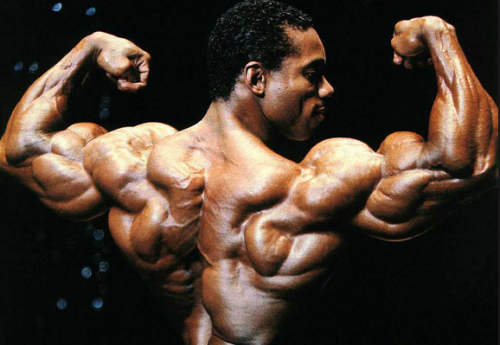The short answer: no. You can stop reading now if you’d like.
I still know people who use the Bowflex® religiously and believe they’re getting the same quality workout as from weights. I would think that after decades of research on how muscles grow, someone would mention that the Bowflex® (and surgical tubing, the Soloflex® and other rubber-bandesque training devices) specifically do not trigger the essential processes needed for hypertrophy, positive hormonal changes, myostatin inhibition, increased bone density, or maximal strength. Am I exaggerating? Somewhat: band device can increase those metrics rapidly for absolute beginners, but after the initial gains, you’re looking at a snail’s pace in the progress department in strength and bone density, and even slower progress—if any—in the other areas.
Why? The main benefit of lifting weights comes from lowering the weight, or the eccentric part of the movement followed by the momentary stretch. For example, on the bench press, the decent of the bar toward the chest triggers most of the sought-after benefits of weight training (like stimulation of growth factors, inflammation which triggers growth through prostaglandins, increases in anabolic hormones like testosterone and hGH, and decreases in catabolic agents like cortisol and myostatin). Bands continually unload the resistance throughout the lower phase of the movement, thereby eliminating the one stimulus needed for results, and minimize the stretch at the bottom. Rubber-band based tools do the opposite of what’s necessary for improvement.
Even for strength, the Bowflex® stimulates minor changes. Your muscle is strongest in the stretched position and weakest in the shortened position. The maximum resistance you can use with a band-device to complete a full repetition is, therefore, far less stimulation than is necessary to fully work the muscle. Basically, for 90% of the range of movement, you’re not working very hard and only the last little bit toward lockout is stimulating your muscle at the point where it’s weakest. It’s like doing leg press Pat Robertson style: totally useless.
Now that I’ve trashed the device, I’m going to be honest: I wish I had one. The Bowflex®, in particular, provides no support or stability throughout the movement. Several movements use handles attached to cables which are then attached to the bendy-rods. There is no stability given at any point through the movement; you must provide full control. I don’t know if you’ve ever tried to do a chest press on one of these things, but your hands go everywhere. The shaking of the rods varies the direction of resistance and you’ll look like an idiot the first time around. This is what makes the Bowflex® so valuable: you over-activate your nervous system compared with traditional weight training by focusing on total control. Mastering Bow Flex-stability translates directly into increased performance in the gym.
I’m not suggesting to buy one, but if you have access to one, I’d do a quick full-body routine two to three times a week upon waking. After you’ve mastered the unstable equilibrium, cutting back to once a week is plenty. Although the Bowflex® is incapable of producing gains of consequence on it’s own, it’s worth dusting it off, setting it up and using to accelerate your nervous system to the next level.








Recent Comments